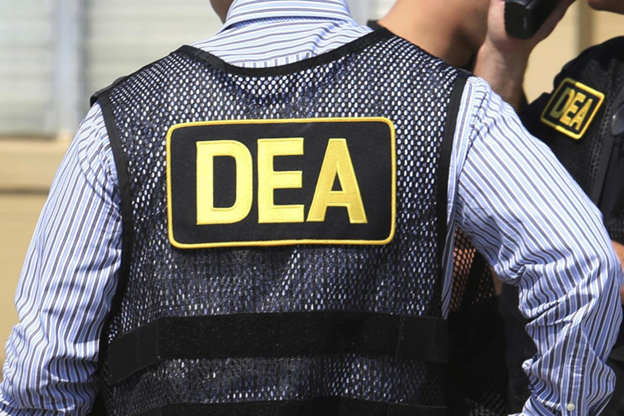7-hydroxymitragynine (7OH) is a naturally occurring alkaloid found in the kratom plant (Mitragyna speciosa). As a partial agonist of the mu-opioid receptor, 7OH produces a range of effects distinct from conventional opioids—including a faster onset, less euphoria, and lower respiratory depression risk. Despite these promising attributes, the DEA is considering whether to schedule 7OH as a controlled substance.
This article presents a data-backed argument against prohibition—drawing from pharmacological research, national overdose statistics, and user reports.
What Is 7-hydroxymitragynine (7OH)?
- Chemical Class: Indole alkaloid derived from kratom
- Action: Partial mu-opioid receptor agonist; G-protein biased signaling
- Receptor Binding: Up to 46x greater mu-opioid affinity than mitragynine
Unlike classical opioids, 7OH activates the mu-opioid receptor without fully triggering the beta-arresting 2 pathway, which has been linked to respiratory depression and overdose. Research from Kruegel et al. (2016) PMC6598155 highlights this pharmacological nuance as a potential advantage in pain management and harm reduction.
Why Scheduling 7OH Would Be a Mistake
1. 7OH Is a Natural Metabolite, Not a Synthetic Compound
7OH forms naturally both in the kratom leaf and as a liver metabolite of mitragynine. The NIH confirms its presence in vivo and in vitro, meaning it is neither an artificial creation nor a designer analog (PMC6598155). Treating it like a synthetic opioid is scientifically misleading.
2. Correlation With Declining Overdose Rates

The CDC reports a nearly 24% drop in overdose deaths between September 2023 and September 2024—the largest single-year decrease in over a decade. While this cannot be wholly attributed to any one cause, 7OH use has increased during this time among individuals seeking opioid alternatives.
User-Reported Impact (2025 Survey, N=122):
- 84% reduced or stopped opioid or SSRI usage within 30 days
- 71% reported functional improvement and reduced cravings
- 63% cited 7OH as more tolerable than prescription medications
These findings align with harm reduction narratives that warrant more attention, not criminalization.
3. Lower Abuse Profile Than Controlled Substances
| Property | 7OH | Prescription Opioids | Benzodiazepines / SSRIs |
| Euphoria | Low | High | Low–Moderate |
| Overdose Potential | Low (limited respiratory depression) | High | Moderate |
| Dependence Risk | Low–Moderate (dose-dependent) | High | Moderate–High |
| Functional Use | Yes (low-dose cognition aid) | Impaired functioning | Emotional blunting |
| Reported Withdrawal | Mild to Moderate | Severe | Moderate |
This comparison supports the claim that 7OH has a therapeutic niche, especially for individuals avoiding traditional opioids or benzodiazepines.
Addressing Common Misconceptions About 7OH
“It’s Just Like Kratom”
Not true. Kratom contains over 40 alkaloids. 7OH is an isolated constituent with a predictable dose-response curve and reduced alkaloid interference. Its effects are more targeted and measurable.
“It’s Highly Addictive”
While it acts on opioid receptors, 7OH exhibits significantly less abuse potential than Schedule II opioids like oxycodone. Clinical data is limited, but user behavior suggests intentional, low-dose usage for relief—not intoxication.
“It’s Unregulated”
Several states have adopted Kratom Consumer Protection Acts (KCPA) that ensure product transparency and safety. Blanket bans would eliminate regulated access and drive users to riskier alternatives.
Legal Outlook: A Precedent for Listening
In 2016, the DEA attempted to emergency schedule kratom. Massive public and scientific backlash forced the agency to reconsider. If the same rushed policy were applied to 7OH, it could:
- Criminalize individuals using 7OH for tapering or symptom relief
- Discourage further NIH-backed research into G-protein biased opioid alternatives
- Increase reliance on dangerous synthetic opioids with higher abuse liability
“A premature scheduling decision ignores the real-world data emerging from grassroots communities.” — Policy Analyst, Harm Reduction Coalition
For current state laws, visit the HART Legal Map.
Why the DEA Must Pause and Research
Before banning 7-hydroxymitragynine, regulators must ask:
- Where is the evidence of mass misuse?
- Has its public health impact been independently studied?
- Could it be serving as a functional, plant-based alternative?
The NIH itself has emphasized the need to explore non-traditional opioids with biased signaling for safety improvements (NCCIH Lecture Series). 7OH may be one of the most promising candidates.
Conclusion: A Call for Data-Driven Drug Policy
If the goal is harm reduction—not punishment—then 7OH should be evaluated through rigorous science, not political momentum. The testimonies, pharmacological findings, and public health trends all point to one conclusion:
7OH should be researched, respected, and regulated—not banned.
To schedule it now would be to criminalize users, hinder science, and roll back progress on the opioid crisis.











